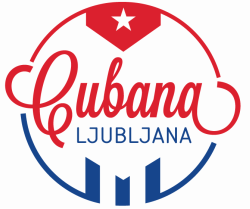|
Author: Uroš Švagan Estimated read time: 10 minutes This article is part of a four-part saga about timba history and development. In the previous article we emphasized the qualities of timba. Now, we are ready to move forward to the social circumstances that contributed to its development, as well as the predecessors of timba - the artists that contributed to its sound with their innovations before timba's time. The Cuban revolution and social change In January 1959 Fidel Castro enters Havana. What followed the revolution was nationalization, a dispute with the US, and the subsequent decline of the tourist industry. Cuban music and the dance industries started going through radical changes. In 1962, the ENA (Escuelas Nacionales de Arte) was established as the school that enabled many Cubans access to free music education. The same year saw the formation of Conjunto Folklórico Nacional, a dance group that is still reviving the wide spectrum of Cuban folkloric dances. However, most post-revolutionary changes were not so positive. Cuban record companies were nationalized into EGREM (Empresa de Grabaciones y Ediciones Musicales), which established and held a monopoly for decades. Dance clubs were closing, musicians became state employees with regular salaries independent of the record and ticket sales. Successful musicians started emigrating. Thus, Cuban music started separating into the Cuban music in the United States, and the one at home on the island. Cuban musical crisis and the start of a new fire In the 60's and 70's island dance music ran into a huge crisis. The only thriving musical concept became the nueva trova, a term describing patriotic revolution worshiping singer-songwriters with guitars. In 1963, Pello El Afrokan created a new rhythm called mozambique, which remained completely local and insignificant in comparison to prerevolutionary genres of the worldwide fame, such as mambo, chacha, son, etc.
In the meantime, Cuban music in the United States remained more faithful to its roots in son. In 1970’s, the migration of Latinos into the US led to the development of salsa. When US salsa artists (Héctor Lavoe, Fania All Stars, etc.) first came to Havana in 1979, their performance was poorly received, and marked as the capitalist falsification of Cuban music. Only a couple of years later, a very positive reception of Venezuelan Oscar D'León triggered a short period of salsa boom in Cuba. As most of elements of salsa had already been present in Cuban son, it is hard to consider off-island salsa to be a major influence on timba.
Nevertheless, the salsa boom triggered a renewed interest in son on the island. In the 1980s, Adalberto Álvarez y Su Son drew their sound closer to salsa. To regain popularity, Los Van Van introduced trombones to their instrumentation, but kept the charanga and rock elements in their music. They emphasized the clave rhythmic backbone, but started using rumba clave instead of the more mainstream son clave pattern. Orquesta Revé made similar adjustments, but remained deeply rooted in changüí, the predecesor of son. This brief period of imported salsa was soon to be overshadowed by domestic artists, with music closer to the taste of Cuban audiences. Even though the aforementioned bands did not start the timba movement, they contributed with their innovations to the sound of the modern Cuban dance music. These bands served as talent agencies for musicians that began innovating timba some decades later. In the next article we outline how timba started from these innovations. Let's start by teleporting ourselves to 1989, the year that marks the release of the first timba album proper. Continued in Part 3.
1 Comment
22/6/2024 13:20:34
established as the school that enabled many Cubans access to free music education? Regard <a href="https://smb.telkomuniversity.ac.id/cerita-telutizen/pendaftaran-snbt-2024-resmi-dibuka-ini-link-dan-cara-daftarnya-jangan-sampai-ketinggalan/">Telkom University</a>
Reply
Leave a Reply. |
Tremenda MuelaTremenda Muela (big mouth) is a blog for dancers, who want to know too much about Cuban music, dance, and culture. Archives
May 2018
Categories |
© 2024 // Cubana Ljubljana // Z uporabo spletne strani se strinjate, da za potrebe navigacije in analitike uporabljamo piškotke

 RSS Feed
RSS Feed